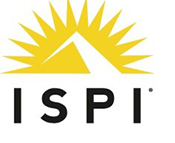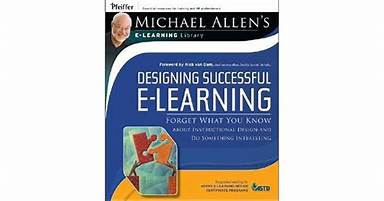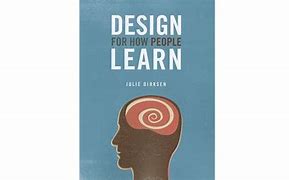Introduction
In the past decade, leaders in the field of learning experience design have given us much to think about, much to strive for. They represent a synthesis of instructional design, learning sciences, and user experience design. They also possess, in one form or another, the resources to execute their ideas. But, if you are an educator or, perhaps, a learning and development specialist in a mid-sized company, you know that you haven’t got a large team or a large budget. You have highly specialized objectives. You want your learning designs to be effective. And you know that you can’t just pull something off the shelf.
In a series of posts, I’ll explore what the leaders are saying and then get down to DIY specifics. I will parse out the skills that instructors and specialists need in order to implement some of these ideas – especially in the area of eLearning interactivity. But, in this post, let’s first contemplate some of the themes that are consistent with evidence-based learning design. Conveniently, many of them are listed in the Serious eLearning Manifesto.
The Serious eLearning Manifesto?
If the manifesto hasn’t lit your corner of the world, here is a little background. In 2014, some highly respected thought leaders in eLearning convened to, in their own words, instigate the Serious eLearning Manifesto. The instigators were Michael Allen, Julie Dirksen, Will Thalheimer, and Clark Quinn. If these names are new to you, you’ll be delighted to learn that each name represents a treasure trove of ideas, insights, research, and reflections on how people learn and how to design effective learning experiences. Joining in the pledge to promote ‘Serious Learning’ is a list that reads like the Who’s Who of learning design. Among them: M.David Merrill, Allison Rossett, Roger Schank, and Sivisailam Thiagarajan, better known to the world as Thiagi.
If you haven’t read the Serious eLearning Manifesto, it is available at https://elearningmanifesto.org/ Parts of the manifesto might seem self-evident. One of the listed attributes of serious eLearning is that it must be meaningful to learners. We might think that it’s obvious we want our learning activities to be meaningful to learners. But, the site discloses the status quo: too much eLearning is content focused, efficient for authors, attendance-driven, focused on knowledge delivery and so on. I encourage you to visit the site for the full story.
Implementing the Supporting Principles
The Serious eLearning Manifesto is based on a number of supporting principles. Each supporting principle is a study in itself. Some aspects of the manifesto and other evidence-based practices are not easily achieved with the traditional skillset and/or toolset of the college or corporation, including the Learning Management System. I’ll sample a few of these. I will place the language of the manifesto in bold. The rest is my running commentary.
The manifesto states:
- Do not assume that learning is the solution.
This is a principle that was driven home to me by the Minnesota chapter of the International Society of Performance Improvement, MnISPI. They espouse the Performance Improvement Model where training is but one outcome of a performance needs analysis. At our firm, Redpath and Company, we are working on a Knowledge Management platform that will eventually be integrated with our learning management system. In the both the academic and corporate worlds, students and employees might benefit from a knowledge management center that gives them the cheat sheets, job aids, micro-learning and whatever they need to solve a problem or perform a task just when they need them.
- Tie Learning to Performance Goals. A new breed of tool can help support this principle. At our firm, we recently implemented an employee engagement system that will soon integrate goals, feedback, and one-one-reviews with training and performance solutions. The system is currently integrated with our Human Resource System (HSRIS), but interoperability standards offer the opportunity to integrate some of the key pieces in learning development: knowledge management, learning management, curriculum mapping, resource library, and employee engagement. The full suite of tools includes Bamboo HRIS; Microsoft Teams, SharePoint, and Automate; Prolaera Learning Management System; Microsoft Stream; and Quantum Workplace. All of these systems can communicate to one another through application programming interfaces (API), which act as connectors between vendors.
- Provide Realistic Practice In eLearning, providing realistic practice might mean a case study, decision-making scenario or simulation that simplifies the world into digestible learning chunks. At our firm, we have generated a few of these and uploaded them to the SCORM cloud, which is integrated with our learning management system. (The SCORM cloud supports traditional SCORM and a newer standard known as the Experience API or xAPI.)
- Adapt to Learner Needs In eLearning that might mean an adaptive learning system that uses some form of artificial intelligence or smart decision-making to meet individual student’s needs. These are systems that predict and/or evaluate student performance and prescribe a learning plan with resources that are matched to topic, reading level, level of knowledge, and their place in a learning hierarchy.
I have a personal interest in all of the supporting principles. As a toolmaker/instructional designer, I’ve been slowly developing and promoting the knowledge management center. I’ve been helping our HR department with the employee engagement system. I’ve researched a host of adaptive learning systems — but have yet to adopt one. I have a deep-rooted interest in promoting the benefit attached to the following supporting principle: Use Interactivity to Prompt Deep Engagement.
Use Interactivity to Prompt Deep Engagement.
Interactivity can mean a number of things. eLearning texts often cite the Community of Inquiry framework, wherein the complete educational experience is described as student-to-student, student-to-instructor, and student-to-content engagement or interactivity. I’ve observed instructors use the first two to good effect. Many experienced online instructors deftly use discussion boards, chats and video conferencing. The tools are there. The instructional support is often there. One of my favorite memories of effective student-to-student interactivity is from a marketing course. The instructor set up the discussion thread so that students pitched ideas to the sub-grouped discussion board as if they were pitching to clients. Students recalled the text and drew from their own knowledge to discuss the merits of the pitch. The discussion wasn’t formulaic as too many are. It was not ‘Read a chapter, post by Wednesday, respond to two posts by Sunday.’ In contrast, the marketing pitch simulated an authentic context (serious eLearning), and provided real-world consequences to the student. Their pitch got a positive or negative response.
Student-to-content interaction is a bit more challenging for both instructors and learning and development folks to implement. The manifesto talks about using interactivity to support reflection, application, rehearsal, elaboration, contextualization, debate, evaluation, synthesis and more. Some of this can be accomplished with the traditional tools of the LMS as described above. Some require 3rd party authoring tools like ZebraZapps, StoryLine, Captivate, and LodeStar. They are vital tools in the eLearning instructor’s toolkit. But making elearning meaningful with the use of authoring tools requires a new set of skills. Without those skills, we settle for what the Serious Learning Manifesto decries: page turning, roll-overs and information search.
Some skills are technical; others related to psychology and cognition. One of the manifesto’s instigators, Michael Allen, wrote more than a half-dozen books and built two incredible tools to enable instructors and instructional designers to build rich learning experiences: Authorware and ZebraZapps. Both tools gave non-computer-programmers the ability to design something interesting: realistic scenarios, storytelling, challenges, environments that invoked action and showed the consequences. The other instigators of the manifesto gave us additional insights into cognition. Julie Dirksen in her highly acclaimed book, Design for How People Learn, gave us insight into why people persist in their negative behaviors, how they remember things, what motivates them, and what strategies are effective. Wil Thalheimer bridged research and practice in topics related to memory, evaluation and presentation, and he led the charge to debunk many of the learning myths that we hold near and dear to our hearts. Clark Quinn has written numerous books that cover learning science and design.
Underlying all of this is research-based evidence. Michael Allen and Julie Dirksen, especially, soft pedal the research. That’s their style. Their writings are lighter and not riddled with citations. Some of it is even iconoclastic – like this title of Michael Allen’s Designing Successful e-Learning: Forget What You Know About Instructional Design and Do Something Interesting. In this field, creative, insightful practices often take a back seat to formulaic approaches. Stating the objective on page one, presenting information on page two, and quizzing on page three would be an example of a formulaic approach.
Julie Dirksen’s Design for How People Learning is illustrated with these quirky line drawings that simplify serious ideas and make them more digestible. But these books, style aside, are grounded in research. A recent book, which incidentally recognizes the contributions of Julie Dirksen and Wil Thalheimer, focuses precisely on evidence-based practices, and exposes the myths.
Evidence-Informed Learning Design was authored my Mirjam Neelen and Paul Kirchner, both highly respected for their contribution to learning sciences. In their book, they list top five ingredients in order of effectivity and efficiency. The practices include spaced practice, practice tests, overlapping the practice of one topic with the practice of another, and questioning and encouraging learners to explain a process or procedure to themselves.
If you look up these authors, read their books, read their blogs, listen to their podcast interviews (see resources below), you are further convinced that the serious eLearning manifesto has merit.
In academia, many have read How Learning Works and contemplated 7 research-based principles for smart teaching offered by Susan Ambrose, Michele DiPietro and others. In How Learning Works, you will find the same themes: Students and trainees are not blank slates. How they are prompted to organize knowledge influences how they learn. Addressing motivation is paramount. Component skills need to be identified, addressed with targeted strategies, mixed and remixed. Meaningful eLearning should offer practice, practice, and more practice with guidance, feedback, scaffolding, elaboration and so on. A page-turner PowerPoint with little engagement doesn’t cut it.
Conclusion
So, in the next post, I will tackle one aspect of serious eLearning. I will parse out what it takes to design a meaningful interaction between student and content. I will use our own tool, LodeStar, to illustrate the ideas but not confine the discussion to our own self-interest. I’ll expand the discussion to include other authoring tools and, hopefully, contribute in some small way to the cause of Serious eLearning. In the meantime, please check out the resources listed below.
Resources
Julie Dirksen’s Book: Design for How People Learn
Wil Thalheimer’s Site: Work-Learning Research Site
Mirjam Neelen and Paul Kirschner’s Blog: 3 Star Learning Experiences
International Society for Performance Improvement
Minnesota Chapter of the International Society for Performance Improvement






